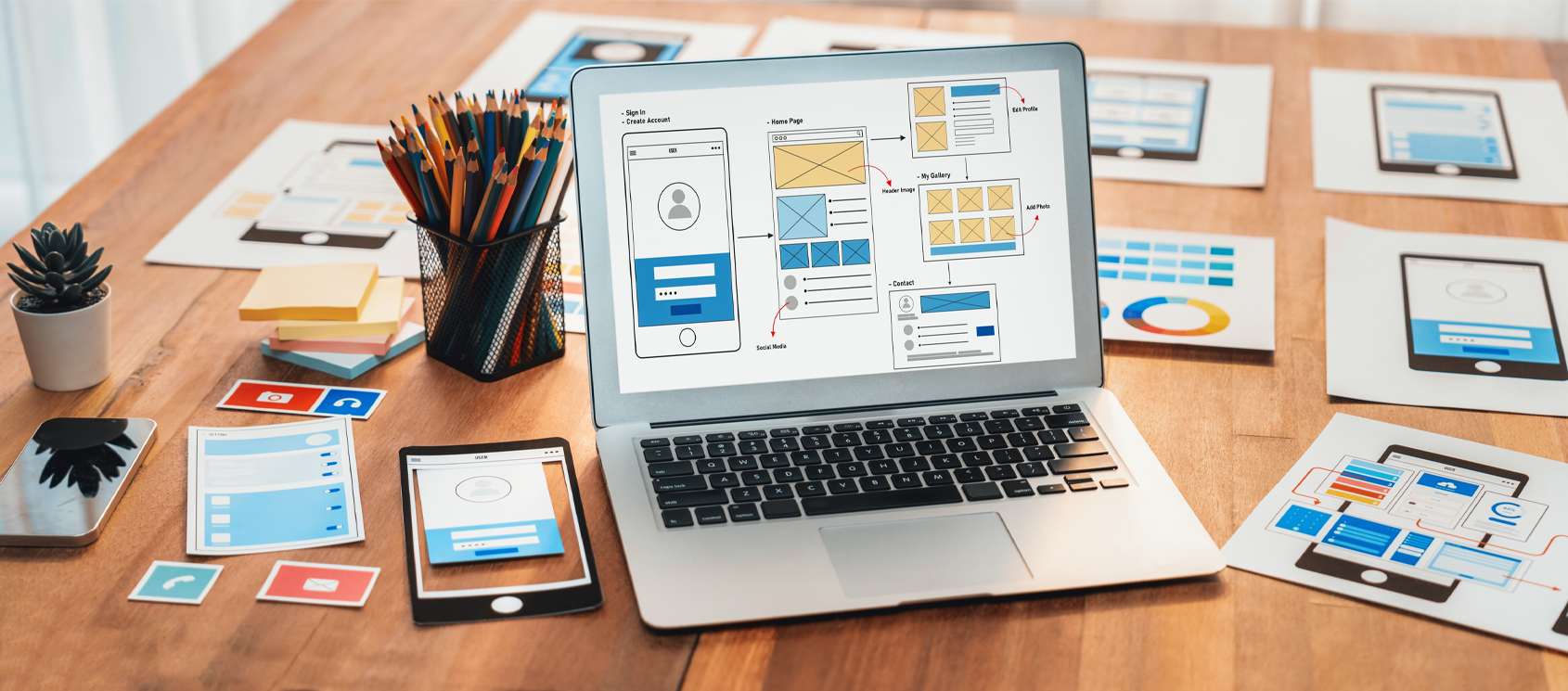In today’s digital world, having a user-friendly website design is essential for keeping visitors engaged and turning them into loyal customers. A well-designed website not only enhances the user experience but also improves your SEO rankings and brand credibility. Here are the top five elements that make a website user-friendly and effective for your business goals.
1. Clear Navigation
Imagine walking into a store where the aisles are a mess and you can’t find anything—frustrating, right? The same goes for websites. Users need to find what they’re looking for quickly and easily.
Start with a simple, clear menu. Use easy-to-understand labels for your menu items and organize them logically. Group similar items together and use dropdown menus if necessary to keep the main navigation bar tidy. Don’t forget to add a search bar to help users find specific content. Breadcrumbs are also helpful as they show users where they are on your site and how they got there, making navigation easier.

2. Responsive Design
In a world where people use multiple devices, having a responsive design is crucial. Your website should look and function well on all devices, from desktops to smartphones. A responsive design adjusts the layout and content to fit different screen sizes, providing a seamless experience across all platforms.
This improves user experience by ensuring text is readable without zooming, buttons are easy to tap, and navigation is straightforward on any device. Not only does this keep users engaged, but it also positively impacts your Search Engine Optimization rankings, as search engines prefer mobile-friendly websites. Tools like Google’s Mobile-Friendly Test can help ensure your site meets these standards.
3. Fast Loading Speed
Users expect websites to load quickly, and delays can lead to higher bounce rates. A one-second delay in page load time can result in a 7% reduction in conversions. So, optimizing your website’s loading speed is essential.
Start by optimizing your images. Use compressed image formats like JPEG for photos and PNG for graphics with fewer colors. Tools like TinyPNG can help reduce image sizes without losing quality. Efficient coding practices, such as minimizing CSS and JavaScript files, also help speed up load times. Additionally, use browser caching to store static files locally on users’ devices, reducing the need for repeated downloads.
4. Consistent Layout
A consistent layout across all pages of your website makes users feel more comfortable and familiar with your site. Consistency in design elements—such as fonts, colors, and button styles—creates a cohesive look and enhances the overall user experience.
This also applies to the placement of navigation menus, footers, and sidebars. Users shouldn’t have to relearn the layout of your site as they move from page to page. By maintaining a uniform structure, you make it easier for visitors to navigate and find information, leading to a more satisfying experience.

5. Accessible Content
Making your content accessible to all users is not just good practice; it’s also required by law in many places. Accessible content means your website can be used by people with various disabilities, including visual, auditory, and cognitive impairments.
Start by using clear fonts and ensuring there’s enough contrast between text and background colors. Avoid small font sizes that can be hard to read. Make sure your website complies with accessibility standards like the Web Content Accessibility Guidelines (WCAG). This includes providing alt text for images, using ARIA (Accessible Rich Internet Applications) landmarks, and ensuring your site can be navigated using a keyboard.
Creating a user-friendly website is essential for providing a positive user experience, improving SEO rankings, and achieving your business goals. By focusing on clear navigation, responsive design, fast loading speed, consistent layout, and accessible content, you can build a website that attracts visitors and keeps them coming back.
At Seven52, we specialize in creating user-friendly websites that drive results. Our expert team can help you design a site that meets your business needs and provides an exceptional user experience. Contact us today to start building a website that stands out and delivers value to your audience.




